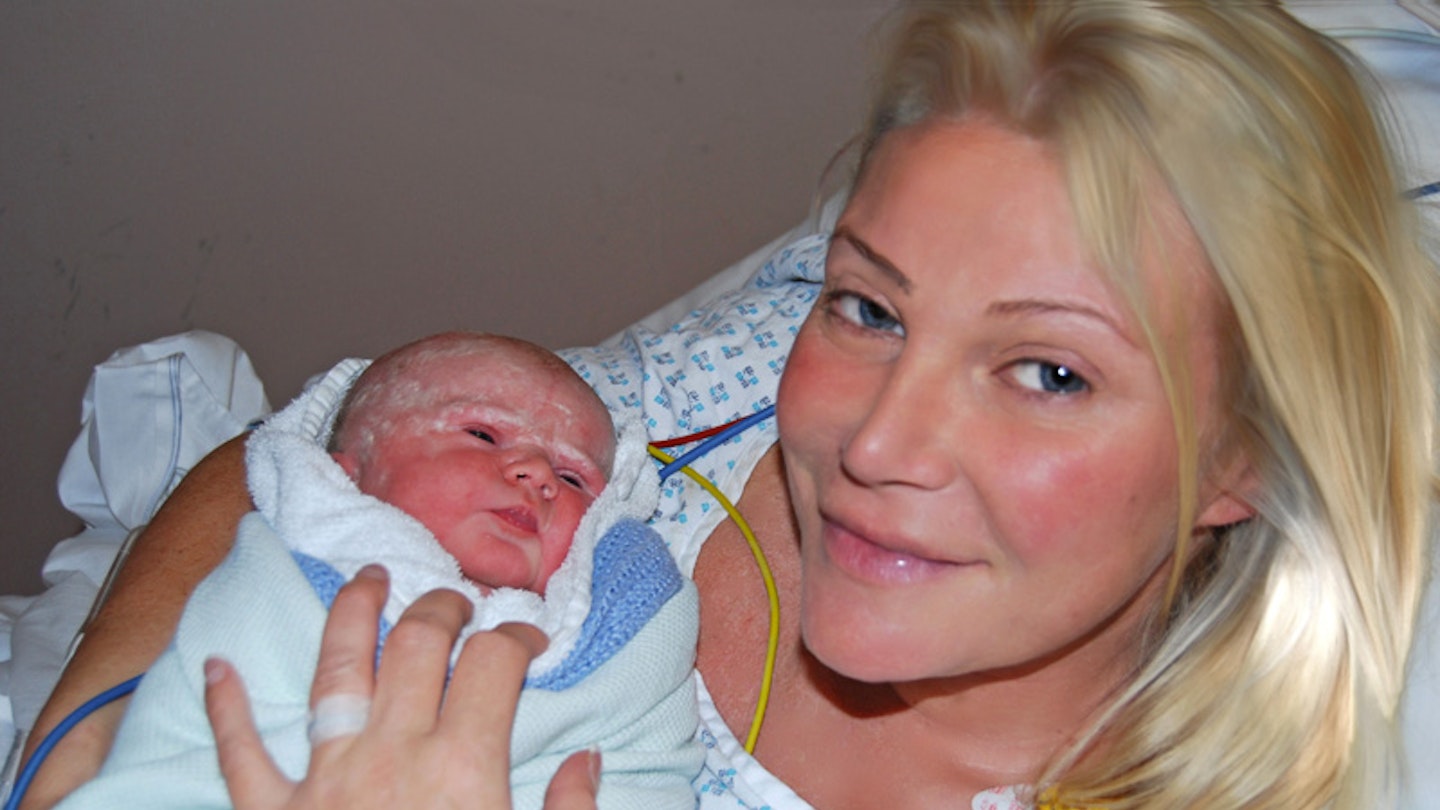Ffyona McKeating, 43, clinical director of a Harley Street clinic, lives in Lancashire with daughters Lara, four, and Darcy, two. She says:
I was overjoyed to be expecting again. I’d lost eight babies over the years. I’d had to deliver most of them, even though I knew they hadn’t survived. It was very traumatic. The cause, I later discovered, was the fact that my husband Grant and I were too genetically similar. This unborn baby had only been given a chance of survival via strong drugs to suppress my immune system.
Drugs are given to make the uterus contract and push the baby out of an incision in the womb
My eldest child, Lara, had been delivered with an elective c-section. I planned the same this time around. But at my 32-week appointment, my consultant suggested I had a ‘natural c-section’, where drugs are given to make the uterus contract and push the baby out of an incision in the womb. My initial reaction was, ‘No way!’ I’d never heard of a natural c-section, and after the traumatic deliveries I’d had, I wanted to get my baby out as quickly and safely as possible.
The consultant said that this method helps squeeze the amniotic fluid out of the baby’s airways. I’d had problems breastfeeding Lara at first because she was so snuffly. When the consultant reassured me there’d be a team of doctors to whip out the baby if there were any problems, my reservations disappeared.
My teeth chattered, not because it was cold, but because I was so frightened!
At 38 weeks I walked into theatre, feeling excited and very nervous. After a spinal anaesthetic, I lay back on the bed, holding Grant’s hand as my lower body became numb. As the surgeon made the incision I closed my eyes. My teeth chattered, not because it was cold, but because I was so frightened!
‘Are you ready?’ the surgeon asked. I nodded. Propping myself up to get a view of my abdomen, I gasped. There was my baby’s face poking out of my bump. It was surreal but beautiful.
I watched as my abdomen literally pushed the baby’s body out
Then the drug Syntometrine was injected into the canula in my hand to stimulate my uterus to contract. It took effect in seconds. I watched as my abdomen literally pushed the baby’s body out. Every 20 seconds or so, it looked like a hand was guiding the baby out of my abdomen.
Within minutes, Darcy was out. The surgeon handed her to me for a cuddle. She cried loudly and I burst into tears. I couldn’t believe I’d given birth to a perfect baby in such an incredible way.
Darcy took well to breastfeeding. She had hardly any problems with mucous. Natural c-sections are so rare that even doctors I’ve spoken to have never heard of it. I’m incredibly grateful that after all the shock and trauma I’d experienced previously, I was given the chance to experience such an amazing, spectacular birth.
Three things I’d tell my friends
-
Natural c-sections are rarely performed, but ask your consultant about the option.
-
If you’re not too squeamish, watch your baby being born (use a mirror if you need to!). Witnessing your baby entering the world is incredible.
-
Use silicone scar sheets, available online or in pharmacies, on your c-section scar to encourage it to heal quickly and neatly. My scar is hardly visible.
